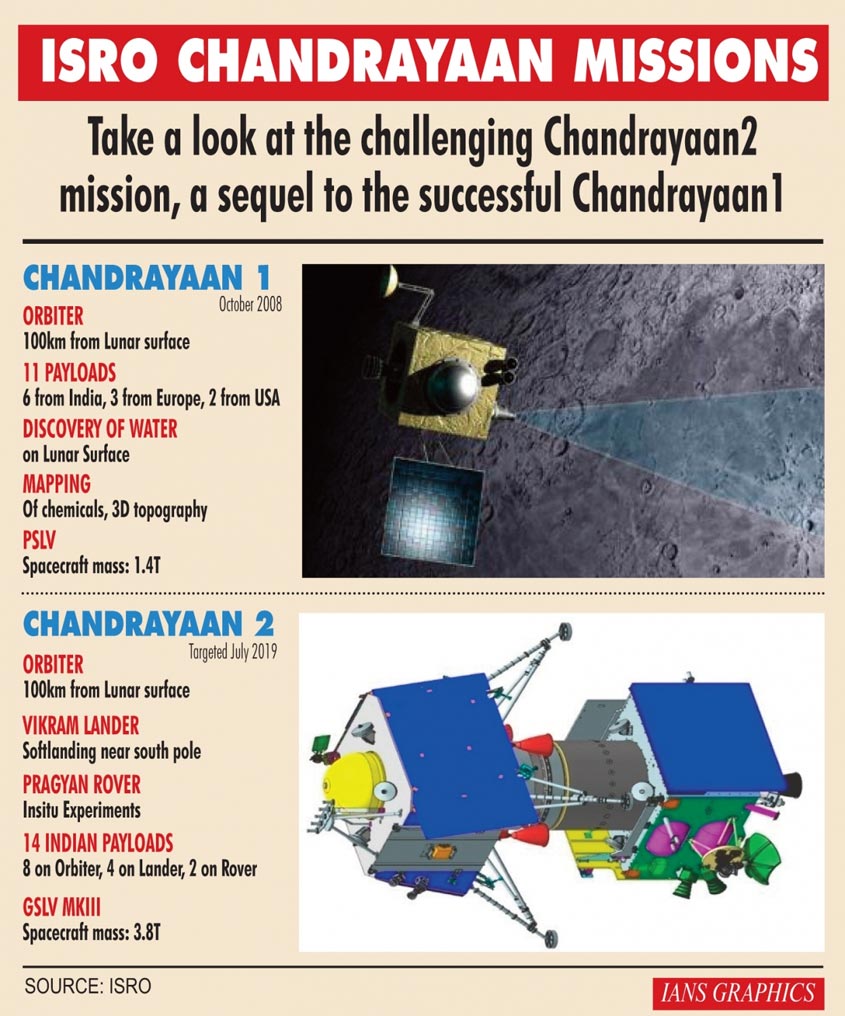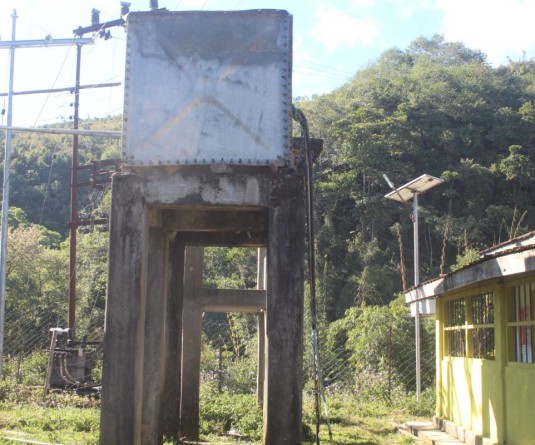Glossary on Basics of Space Flight

With the buzz generated by Chandrayaan-2, the second lunar exploration mission developed by the Indian Space Research Organisation (ISRO), after Chandrayaan-1, here’s a Glossary on Basics of Space Flight to make oneself familiar with some common terms associated with a space exploration.
Abort: To cancel or cut short a mission.
Accelerometer: A device that senses changes in speed along its axis.
Aeronautics: The science of building and operating vehicles for flight.
Air lock: A compartment separating areas a different environment, especially different air pressures, that is used for entry to and departure from a spacecraft.
Altimeter: A device that measures altitude above the surface of a planet or moon. Spacecraft altimeters work by timing the round trip of radio signals bounced off the surface.
Autopilot: A system or device that controls a vehicle's flight at a preset course and altitude.
Ballistics: The science that deals with the motion, behavior, appearance or modification of missiles acted upon by propellants, rifling, wind, gravity, temperature or other modifying conditions of force.
Bi-propellant: A rocket propellant consisting of two unmixed or uncombined chemicals (fuel and oxidizer) fed separately into the combustion chamber.
Boost: The extra power given to a rocket or space vehicle during liftoff, climb or flight, as with a booster rocket. Booster: The first stage of a missile or rocket.
Centrifugal force: A force which is directed away from the center of rotation.
Combustion chamber: The chamber in a rocket where the fuel and oxidizer are ignited and burned. By common usage the expansion nozzle is included as part of the combustion chamber, particularly for liquid-propelled rocket engines.
Control rocket: A vernier or other rocket used to control the attitude of, or slightly change the speed of, a spacecraft.
Cryogenic: A rocket fuel or oxidizer which is liquid only at very low temperatures, e.g. liquid hydrogen which has a boiling point of -217.2oC (-423oF).
Descent engine: The rocket used to power a spacecraft as it makes a controlled landing on the surface of a planet or moon.
Descent module: That part of a spacecraft that descends from orbit to the surface of a planet or moon.
Docking: The technique of connecting two or more spacecraft in space.
Downlink: The radio signal transmitted from a spacecraft to Earth.
Escape tower: A rocket-powered framework designed to separate spacecraft modules from their booster rockets in case of accident. Escape towers are mounted atop the spacecraft and jettisoned after launch.
Extravehicular activity: Action performed by an astronaut or cosmonaut outside a vehicle in space; a spacewalk.
Flyby spacecraft: A spacecraft which follows a continuous trajectory past a target object, never to be captured into an orbit. It must carry instruments that are capable of observing passing targets by compensating for the target's apparent motion.
Jet propulsion: Reaction propulsion in which the propulsion unit obtains oxygen from the air as distinguished from rocket propulsion in which the unit carries its own oxygen-producing material.
Lander spacecraft: A spacecraft designed to reach the surface of a planet or moon and survive long enough to telemeter data back to Earth.
Launch complex & pad: The complex of site, facilities and equipment used to launch a missile or space rocket. Lunch pad is the load-bearing base from which a rocket or spacecraft positioned on its launcher is fired.
Lunar roving vehicle: A battery powered wheeled vehicle used by Apollo astronauts to explore the lunar surface.
Mach: The ratio of the speed of a vehicle (or of a liquid or gas) to the local speed of sound.
Module: A self-contained unit of a spacecraft or space station which serves as a building block for the total structure.
Mono-propellant: A rocket propellant consisting of a single substance, especially a liquid containing both fuel and oxidizer, either combined or mixed together.
Motor: In spacecraft, a rocket that burns solid propellants.
Nautical mile: The distance spanned by one minute of arc in latitude, defined internationally as 1,852 meters (6,076.1033 feet).
Orbiter spacecraft: A spacecraft designed to travel to a distant planet or moon and enter orbit. It must carry a substantial propulsive capability to decelerate it at the right moment to achieve orbit insertion.
O-stage: Rocket boosters which operate during part of the burning time of the first stage of a launch vehicle to provide additional thrust.
Payload: Revenue-producing or useful cargo carried by a spacecraft; also, anything carried in a rocket or spacecraft that is not part of the structure, propellant, or guidance systems.
Pressure suit: A suit, with helmet attached, which is inflated to provide body pressure and air, worn by the crew of certain spacecraft and aircraft which fly at great altitudes.
Propellant: A chemical or chemical mixture burned to create the thrust for a rocket or spacecraft.
Retrorocket: A rocket fired to reduce the speed of a spacecraft.
Rocket: A missile or vehicle propelled by the combustion of a fuel and a contained oxygen supply. The forward thrust of a rocket results when exhaust products are ejected from the tail.
Rover: A rover (or sometimes planetary rover) is a space exploration vehicle designed to move across the surface of a planet or other celestial body.
Sounding rocket: A research rocket used to obtain data from the upper atmosphere.
Space: The universe beyond Earth's atmosphere. The boundary at which the atmosphere ends and space begins is not sharp but starts at approximately 100 miles above Earth's surface.
Spacecraft: A piloted or unpiloted vehicle designed for travel in space.
Spacecraft clock: A counter maintained by the command & data subsystem. It meters the passing of time during the life of the spacecraft, and regulates nearly all activity within the spacecraft systems.
Space platform: A large artificial satellite conceived as a habitable base in space with scientific, exploratory or military applications. A space station.
Space station: An orbiting spacecraft designed to support human activity for an extended time.
Sustainer engine: An engine that maintains propulsion of a launch vehicle once it has discarded its boosters.
Transponder: A device that transmits a response signal automatically when activated by an incoming signal.
Uplink: The radio signal transmitted to a spacecraft from Earth.
(Source: https://www.scss.tcd.ie/Stephen.Farrell/ipn/background/Braeunig/glossary.htm; https://spaceplace.nasa.gov/glossary/en/)






